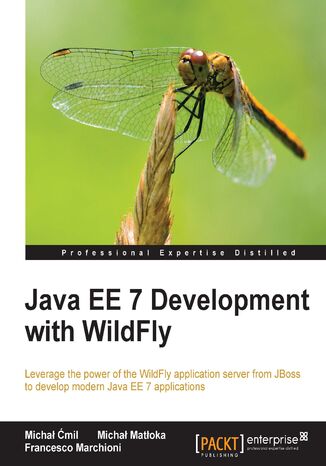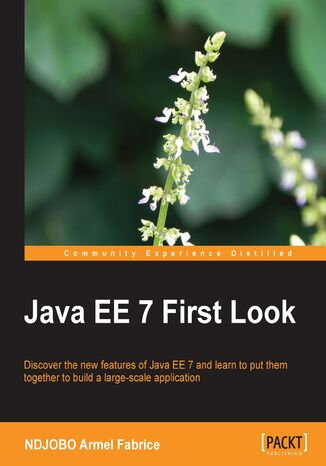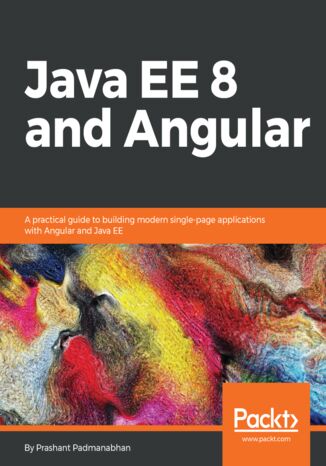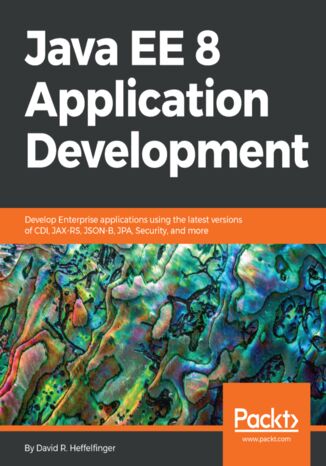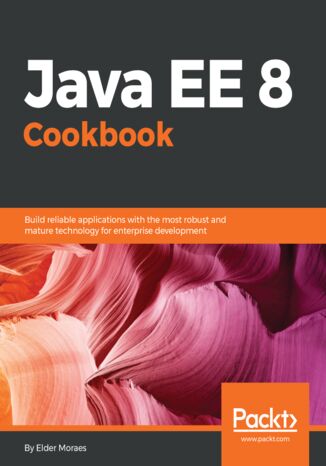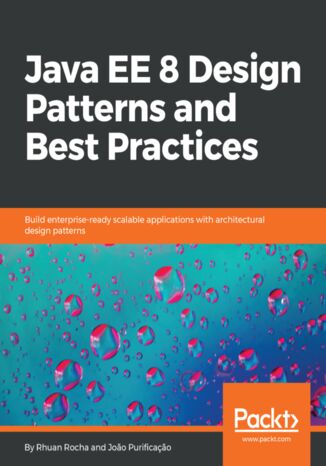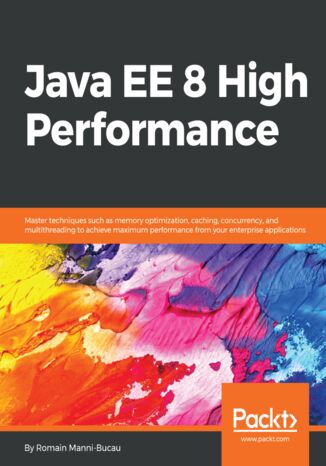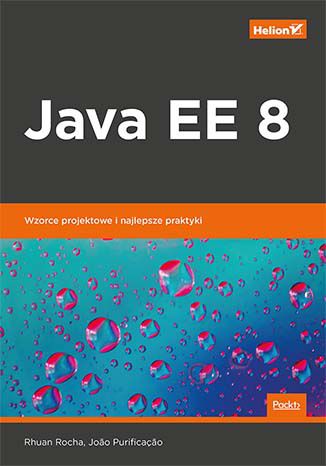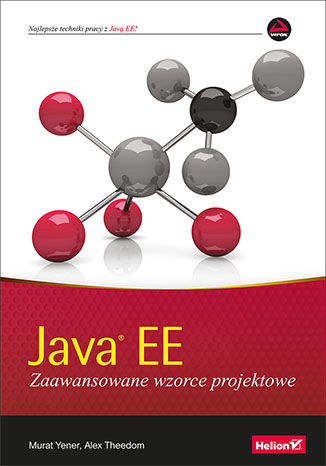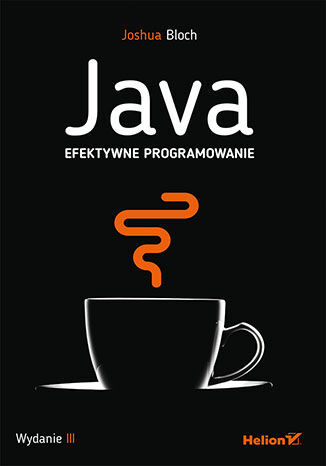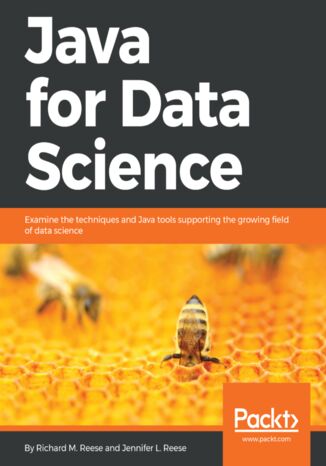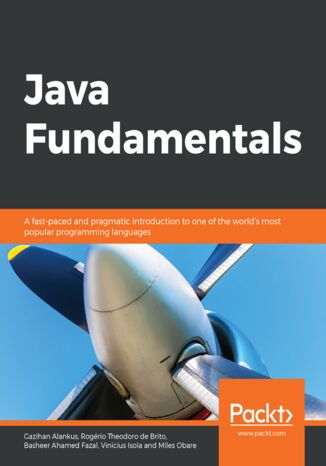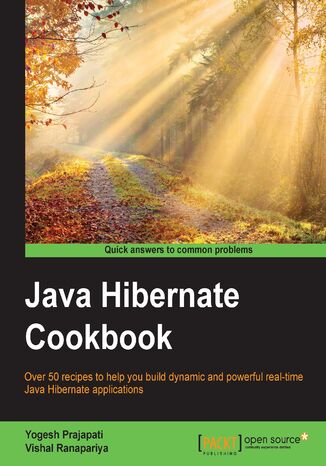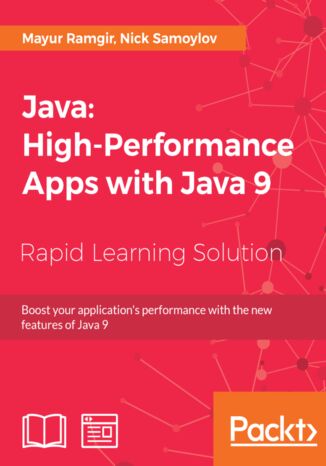Kategorie
Ebooki
-
Biznes i ekonomia
- Bitcoin
- Bizneswoman
- Coaching
- Controlling
- E-biznes
- Ekonomia
- Finanse
- Giełda i inwestycje
- Kompetencje osobiste
- Komputer w biurze
- Komunikacja i negocjacje
- Mała firma
- Marketing
- Motywacja
- Multimedialne szkolenia
- Nieruchomości
- Perswazja i NLP
- Podatki
- Polityka społeczna
- Poradniki
- Prezentacje
- Przywództwo
- Public Relation
- Raporty, analizy
- Sekret
- Social Media
- Sprzedaż
- Start-up
- Twoja kariera
- Zarządzanie
- Zarządzanie projektami
- Zasoby ludzkie (HR)
-
Dla dzieci
-
Dla młodzieży
-
Edukacja
-
Encyklopedie, słowniki
-
E-prasa
- Architektura i wnętrza
- BHP
- Biznes i Ekonomia
- Dom i ogród
- E-Biznes
- Ekonomia i finanse
- Ezoteryka
- Finanse
- Finanse osobiste
- Firma
- Fotografia
- Informatyka
- Kadry i płace
- Kobieca
- Komputery, Excel
- Księgowość
- Kultura i literatura
- Naukowe i akademickie
- Ochrona środowiska
- Opiniotwórcze
- Oświata
- Podatki
- Podróże
- Psychologia
- Religia
- Rolnictwo
- Rynek książki i prasy
- Transport i Spedycja
- Zdrowie i uroda
-
Historia
-
Informatyka
- Aplikacje biurowe
- Bazy danych
- Bioinformatyka
- Biznes IT
- CAD/CAM
- Digital Lifestyle
- DTP
- Elektronika
- Fotografia cyfrowa
- Grafika komputerowa
- Gry
- Hacking
- Hardware
- IT w ekonomii
- Pakiety naukowe
- Podręczniki szkolne
- Podstawy komputera
- Programowanie
- Programowanie mobilne
- Serwery internetowe
- Sieci komputerowe
- Start-up
- Systemy operacyjne
- Sztuczna inteligencja
- Technologia dla dzieci
- Webmasterstwo
-
Inne
-
Języki obce
-
Kultura i sztuka
-
Lektury szkolne
-
Literatura
- Antologie
- Ballada
- Biografie i autobiografie
- Dla dorosłych
- Dramat
- Dzienniki, pamiętniki, listy
- Epos, epopeja
- Esej
- Fantastyka i science-fiction
- Felietony
- Fikcja
- Humor, satyra
- Inne
- Klasyczna
- Kryminał
- Literatura faktu
- Literatura piękna
- Mity i legendy
- Nobliści
- Nowele
- Obyczajowa
- Okultyzm i magia
- Opowiadania
- Pamiętniki
- Podróże
- Poemat
- Poezja
- Polityka
- Popularnonaukowa
- Powieść
- Powieść historyczna
- Proza
- Przygodowa
- Publicystyka
- Reportaż
- Romans i literatura obyczajowa
- Sensacja
- Thriller, Horror
- Wywiady i wspomnienia
-
Nauki przyrodnicze
-
Nauki społeczne
-
Podręczniki szkolne
-
Popularnonaukowe i akademickie
- Archeologia
- Bibliotekoznawstwo
- Filmoznawstwo
- Filologia
- Filologia polska
- Filozofia
- Finanse i bankowość
- Geografia
- Gospodarka
- Handel. Gospodarka światowa
- Historia i archeologia
- Historia sztuki i architektury
- Kulturoznawstwo
- Lingwistyka
- Literaturoznawstwo
- Logistyka
- Matematyka
- Medycyna
- Nauki humanistyczne
- Pedagogika
- Pomoce naukowe
- Popularnonaukowa
- Pozostałe
- Psychologia
- Socjologia
- Teatrologia
- Teologia
- Teorie i nauki ekonomiczne
- Transport i spedycja
- Wychowanie fizyczne
- Zarządzanie i marketing
-
Poradniki
-
Poradniki do gier
-
Poradniki zawodowe i specjalistyczne
-
Prawo
- BHP
- Historia
- Kodeks drogowy. Prawo jazdy
- Nauki prawne
- Ochrona zdrowia
- Ogólne, kompendium wiedzy
- Podręczniki akademickie
- Pozostałe
- Prawo budowlane i lokalowe
- Prawo cywilne
- Prawo finansowe
- Prawo gospodarcze
- Prawo gospodarcze i handlowe
- Prawo karne
- Prawo karne. Przestępstwa karne. Kryminologia
- Prawo międzynarodowe
- Prawo międzynarodowe i zagraniczne
- Prawo ochrony zdrowia
- Prawo oświatowe
- Prawo podatkowe
- Prawo pracy i ubezpieczeń społecznych
- Prawo publiczne, konstytucyjne i administracyjne
- Prawo rodzinne i opiekuńcze
- Prawo rolne
- Prawo socjalne, prawo pracy
- Prawo Unii Europejskiej
- Przemysł
- Rolne i ochrona środowiska
- Słowniki i encyklopedie
- Zamówienia publiczne
- Zarządzanie
-
Przewodniki i podróże
- Afryka
- Albumy
- Ameryka Południowa
- Ameryka Środkowa i Północna
- Australia, Nowa Zelandia, Oceania
- Austria
- Azja
- Bałkany
- Bliski Wschód
- Bułgaria
- Chiny
- Chorwacja
- Czechy
- Dania
- Egipt
- Estonia
- Europa
- Francja
- Góry
- Grecja
- Hiszpania
- Holandia
- Islandia
- Litwa
- Łotwa
- Mapy, Plany miast, Atlasy
- Miniprzewodniki
- Niemcy
- Norwegia
- Podróże aktywne
- Polska
- Portugalia
- Pozostałe
- Przewodniki po hotelach i restauracjach
- Rosja
- Rumunia
- Słowacja
- Słowenia
- Szwajcaria
- Szwecja
- Świat
- Turcja
- Ukraina
- Węgry
- Wielka Brytania
- Włochy
-
Psychologia
- Filozofie życiowe
- Kompetencje psychospołeczne
- Komunikacja międzyludzka
- Mindfulness
- Ogólne
- Perswazja i NLP
- Psychologia akademicka
- Psychologia duszy i umysłu
- Psychologia pracy
- Relacje i związki
- Rodzicielstwo i psychologia dziecka
- Rozwiązywanie problemów
- Rozwój intelektualny
- Sekret
- Seksualność
- Uwodzenie
- Wygląd i wizerunek
- Życiowe filozofie
-
Religia
-
Sport, fitness, diety
-
Technika i mechanika
Audiobooki
-
Biznes i ekonomia
- Bitcoin
- Bizneswoman
- Coaching
- Controlling
- E-biznes
- Ekonomia
- Finanse
- Giełda i inwestycje
- Kompetencje osobiste
- Komunikacja i negocjacje
- Mała firma
- Marketing
- Motywacja
- Nieruchomości
- Perswazja i NLP
- Podatki
- Polityka społeczna
- Poradniki
- Prezentacje
- Przywództwo
- Public Relation
- Sekret
- Social Media
- Sprzedaż
- Start-up
- Twoja kariera
- Zarządzanie
- Zarządzanie projektami
- Zasoby ludzkie (HR)
-
Dla dzieci
-
Dla młodzieży
-
Edukacja
-
Encyklopedie, słowniki
-
E-prasa
-
Historia
-
Informatyka
-
Inne
-
Języki obce
-
Kultura i sztuka
-
Lektury szkolne
-
Literatura
- Antologie
- Ballada
- Biografie i autobiografie
- Dla dorosłych
- Dramat
- Dzienniki, pamiętniki, listy
- Epos, epopeja
- Esej
- Fantastyka i science-fiction
- Felietony
- Fikcja
- Humor, satyra
- Inne
- Klasyczna
- Kryminał
- Literatura faktu
- Literatura piękna
- Mity i legendy
- Nobliści
- Nowele
- Obyczajowa
- Okultyzm i magia
- Opowiadania
- Pamiętniki
- Podróże
- Poezja
- Polityka
- Popularnonaukowa
- Powieść
- Powieść historyczna
- Proza
- Przygodowa
- Publicystyka
- Reportaż
- Romans i literatura obyczajowa
- Sensacja
- Thriller, Horror
- Wywiady i wspomnienia
-
Nauki przyrodnicze
-
Nauki społeczne
-
Popularnonaukowe i akademickie
-
Poradniki
-
Poradniki zawodowe i specjalistyczne
-
Prawo
-
Przewodniki i podróże
-
Psychologia
- Filozofie życiowe
- Komunikacja międzyludzka
- Mindfulness
- Ogólne
- Perswazja i NLP
- Psychologia akademicka
- Psychologia duszy i umysłu
- Psychologia pracy
- Relacje i związki
- Rodzicielstwo i psychologia dziecka
- Rozwiązywanie problemów
- Rozwój intelektualny
- Sekret
- Seksualność
- Uwodzenie
- Wygląd i wizerunek
- Życiowe filozofie
-
Religia
-
Sport, fitness, diety
-
Technika i mechanika
Kursy video
-
Bazy danych
-
Big Data
-
Biznes, ekonomia i marketing
-
Cyberbezpieczeństwo
-
Data Science
-
DevOps
-
Dla dzieci
-
Elektronika
-
Grafika/Wideo/CAX
-
Gry
-
Microsoft Office
-
Narzędzia programistyczne
-
Programowanie
-
Rozwój osobisty
-
Sieci komputerowe
-
Systemy operacyjne
-
Testowanie oprogramowania
-
Urządzenia mobilne
-
UX/UI
-
Web development
-
Zarządzanie
Podcasty
NDJOBO Armel Fabrice, Armel Fabrice NDJOBO
For several years, the development of robust, scalable, and secured applications was a headache for software companies. They had to use proprietary solutions with non-standard methods. With Java EE, many of these solutions have been standardized, simplified, adapted to the needs of the developer, and made freely available to the community. Thus, it is now possible to develop truly robust, secure, and scalable applications at a lower cost using tools such as: Eclipse, NetBeans, and GlassFish.Java EE 7 First Look is a practical guide which, through the creation of an online pre-registration website, will introduce you to the novelties of Java EE 7 and give you ideas for utilizing them.Giving you an insight on new features introduced in Java EE 7, this book begins with the objectives of Java EE 7 and then covers the new specifications added in Java EE 7. Next, you will move on to the improvements made in APIs and EJBs and how to work with them. You will also learn how to ensure that the quality of data is maintained that has been manipulated by your application and gives you the opportunity to put a small part of AOP (Aspect Oriented Programming) in action.Finally, the book will give you some ideas to realize n-tier applications using the Java EE platform and will also provide some guidance for the integration of your Java EE application to heterogeneous systems with which your application will interact.After reading Java EE 7 First Look, you'll have a good idea about the changes brought in by Java EE 7, as well as how to make the best use of these to build a large-scale application.
The demand for modern and high performing web enterprise applications is growing rapidly. No more is a basic HTML frontend enough to meet customer demands. This book will be your one-stop guide to build outstanding enterprise web applications with Java EE and Angular. It will teach you how to harness the power of Java EE to build sturdy backends while applying Angular on the frontend. Your journey to building modern web enterprise applications starts here!The book starts with a brief introduction to the fundamentals of Java EE and all the new APIs offered in the latest release. Armed with the knowledge of Java EE 8, you will go over what it's like to build an end-to-end application, configure database connection for JPA, and build scalable microservices using RESTful APIs running in Docker containers. Taking advantage of the Payara Micro capabilities, you will build an Issue Management System, which will have various features exposed as services using the Java EE backend. With a detailed coverage of Angular fundamentals, the book will expand the Issue Management System by building a modern single page application frontend. Moving forward, you will learn to fit both the pieces together, that is, the frontend Angular application with the backend Java EE microservices. As each unit in a microservice promotes high cohesion, you will learn different ways in which independent units can be tested efficiently.Finishing off with concepts on securing your enterprise applications, this book is a handson guide for building modern web applications.
Java EE is an Enterprise Java standard. Applications written to comply with the Java EE specification do not tie developers to a specific vendor; instead they can be deployed to any Java EE compliant application server. With this book, you’ll get all the tools and techniques you need to build robust and scalable applications in Java EE 8. This book covers all the major Java EE 8 APIs including JSF 2.3, Enterprise JavaBeans (EJB) 3.2, Contexts and Dependency Injection (CDI) 2.0, the Java API for WebSockets, JAX-RS 2.1, Servlet 4.0, and more.The book begins by introducing you to Java EE 8 application development and goes on to cover all the major Java EE 8 APIs. It goes beyond the basics to develop Java EE applications that can be deployed to any Java EE 8 compliant application server.It also introduces advanced topics such as JSON-P and JSON-B, the Java APIs for JSON processing, and the Java API for JSON binding. These topics dive deep, explaining how the two APIs (the Model API and the Streaming API) are used to process JSON data.Moving on, we cover additional Java EE APIs, such as the Java API for Websocket and the Java Message Service (JMS), which allows loosely coupled, asynchronous communication. Further on, you’ll discover ways to secure Java EE applications by taking advantage of the new Java EE Security API.Finally, you’ll learn more about the RESTful web service development using the latest JAX-RS 2.1 specification. You’ll also get to know techniques to develop cloud-ready microservices in Java EE.
Java EE is a collection of technologies and APIs to support Enterprise Application development. The choice of what to use and when can be dauntingly complex for any developer. This book will help you master this. Packed with easy to follow recipes, this is your guide to becoming productive with Java EE 8.You will begin by seeing the latest features of Java EE 8, including major Java EE 8 APIs and specifications such as JSF 2.3, and CDI 2.0, and what they mean for you.You will use the new features of Java EE 8 to implement web-based services for your client applications. You will then learn to process the Model and Streaming APIs using JSON-P and JSON-B and will learn to use the Java Lambdas support offered in JSON-P. There are more recipes to fine-tune your RESTful development, and you will learn about the Reactive enhancements offered by the JAX-RS 2.1 specification.Later on, you will learn about the role of multithreading in your enterprise applications and how to integrate them for transaction handling. This is followed by implementing microservices with Java EE and the advancements made by Java EE for cloud computing.The final set of recipes shows you how take advantage of the latest security features and authenticate your enterprise application.At the end of the book, the Appendix shows you how knowledge sharing can change your career and your life.
Rhuan Rocha, Joao Carlos Purificaçao
Patterns are essential design tools for Java developers. Java EE Design Patterns and Best Practices helps developers attain better code quality and progress to higher levels of architectural creativity by examining the purpose of each available pattern and demonstrating its implementation with various code examples. This book will take you through a number of patterns and their Java EE-specific implementations.In the beginning, you will learn the foundation for, and importance of, design patterns in Java EE, and then will move on to implement various patterns on the presentation tier, business tier, and integration tier. Further, you will explore the patterns involved in Aspect-Oriented Programming (AOP) and take a closer look at reactive patterns. Moving on, you will be introduced to modern architectural patterns involved in composing microservices and cloud-native applications. You will get acquainted with security patterns and operational patterns involved in scaling and monitoring, along with some patterns involved in deployment.By the end of the book, you will be able to efficiently address common problems faced when developing applications and will be comfortable working on scalable and maintainable projects of any size.
Java EE is one of the most popular tools for enterprise application design and development. With recent changes to Java EE 8 specifications, Java EE application development has become a lot simpler with the new specifications, some of which compete with the existing specifications. This guide provides a complete overview of developing highly performant, robust and secure enterprise applications with Java EE with Eclipse.The book begins by exploring different Java EE technologies and how to use them (JSP, JSF, JPA, JDBC, EJB, and more), along with suitable technologies for different scenarios. You will learn how to set up the development environment for Java EE applications and understand Java EE specifications in detail, with an emphasis on examples. The book takes you through deployment of an application in Tomcat, GlassFish Servers, and also in the cloud. It goes beyond the basics and covers topics like debugging, testing, deployment, and securing your Java EE applications. You'll also get to know techniques to develop cloud-ready microservices in Java EE.
The ease with which we write applications has been increasing, but with this comes the need to address their performance. A balancing act between easily implementing complex applications and keeping their performance optimal is a present-day need. In this book, we explore how to achieve this crucial balance while developing and deploying applications with Java EE 8. The book starts by analyzing various Java EE specifications to identify those potentially affecting performance adversely. Then, we move on to monitoring techniques that enable us to identify performance bottlenecks and optimize performance metrics. Next, we look at techniques that help us achieve high performance: memory optimization, concurrency, multi-threading, scaling, and caching. We also look at fault tolerance solutions and the importance of logging. Lastly, you will learn to benchmark your application and also implement solutions for continuous performance evaluation.By the end of the book, you will have gained insights into various techniques and solutions that will help create high-performance applications in the Java EE 8 environment.
Java EE 8. Wzorce projektowe i najlepsze praktyki
Od profesjonalnych systemów informatycznych wymaga się wysokiej dostępności usług, łatwego wprowadzania niezbędnych zmian, skalowalności i możliwości przetworzenia ogromnej ilości danych. Java EE 8 znakomicie nadaje się do tworzenia aplikacji spełniających te wyśrubowane kryteria. Poza tym Java to język wieloplatformowy, jej kod jest otwarty, została dobrze przetestowana, a doświadczenie i wsparcie społeczności użytkowników okazują się nie do przecenienia. Wszechstronność i popularność Javy ma też mroczną stronę - programiści bardzo często muszą rozwiązywać istotne problemy, które zwykle dotyczą integracji usług, wysokiej dostępności i odporności systemu na błędy. Rozwiązaniem pozwalającym uniknąć wielu z tych kłopotów jest zastosowanie odpowiednich wzorców projektowych i przestrzeganie dobrych praktyk. To książka przeznaczona dla programistów, którzy chcą tworzyć aplikacje biznesowe z użyciem wzorców projektowych, wzorców biznesowych i najlepszych praktyk. Zawiera wyjaśnienie podstawowych koncepcji Javy EE 8, opis jej warstw oraz omówienie najlepszych praktyk tworzenia aplikacji biznesowych. Przedstawia zasady łączenia wzorców projektowych i wzorców biznesowych w Javie EE 8, a także techniki optymalizacji rozwiązań z wykorzystaniem programowania aspektowego, programowania reaktywnego i mikrousług. Opisano tu szereg wzorców: integracyjne, reaktywne, bezpieczeństwa, wdrażania i operacyjne. Zaprezentowano również projekt MicroProfile, przydatny do tworzenia aplikacji dla architektury mikrousług. W książce między innymi: korzyści ze stosowania wzorców projektowych wzorce warstw prezentacji i biznesowej wzorce dla aplikacji działających w chmurze implementacja wzorca SSO wzorce związane ze skalowalnością, z wydajnością i zarządzaniem aplikacją Java EE 8: zestaw świetnych narzędzi dla zawodowca!
Java EE. Zaawansowane wzorce projektowe
Rozwiązania realnych problemów w Javie EE przy użyciu wzorców projektowych Platforma Java EE to najbardziej zaawansowane rozwiązanie do budowania złożonych systemów informatycznych, jakie oferuje firma Oracle. Jest wykorzystywana wszędzie tam, gdzie wymaga się najwyższej wydajności, bezpieczeństwa oraz niezawodności. Java EE dostarcza kompletny zbiór narzędzi, który pozwoli Ci zbudować aplikację o dowolnym stopniu skomplikowania. Jeżeli chcesz poznać najlepsze wzorce tworzenia oprogramowania z wykorzystaniem Javy EE, to trafiłeś na doskonałą książkę. Sięgnij po nią i poznaj podstawy pracy z tą platformą oraz klasyczne wzorce projektowe. Gdy już opanujesz fundamenty, przejdziesz do nauki zaawansowanych mechanizmów. Wstrzykiwanie zależności, porównanie CDI i EJB, budowanie serwisów REST-owych, fabryki czy fasady to tylko niektóre z poruszanych tu tematów. Ponadto przekonasz się, jak tworzyć asynchroniczne ziarna lub serwlety oraz przygotujesz własną usługę odmierzającą czas. Na sam koniec przeanalizujesz kilka antywzorców. Pamiętaj — ich nie warto stosować! Książka ta jest doskonałą lekturą dla wszystkich programistów języka Java chcących pogłębić swoją wiedzę na temat Javy EE oraz najlepszych praktyk. Dzięki tej książce nauczysz się: jak wykorzystywać adnotacyjne implementacje wzorców projektowych Javy EE i stosować przejrzystszy model programowania niż w J2EE; implementować w Javie EE najważniejsze wzorce, takie jak Fasada, Singleton, Fabryka, Dekorator, Obserwator, Wstrzykiwanie Zależności oraz Model-Widok-Kontroler; metod programowania w Javie EE, np. programowania aspektowego, asynchronicznego i implementowania REST-owych usług sieciowych; unikać błędów polegających nie nieprawidłowym stosowaniu wzorców projektowych; stosować wzorce projektowe we właściwym kontekście, a nie wszędzie gdzie się uda. Najlepsze techniki pracy z Javą EE!
Java. Efektywne programowanie. Wydanie III
Poznaj najlepsze praktyki programowania z użyciem platformy Java Język Java jest konsekwentnie udoskonalany i unowocześniany dzięki zaangażowaniu wielu ludzi. Nowoczesny język Java staje się coraz bardziej wieloparadygmatowy, co oznacza, że stosowanie najlepszych praktyk w coraz większym stopniu determinuje jakość kodu. Obecnie napisanie kodu, który prawidłowo działa i może być łatwo zrozumiany przez innych programistów, nie wystarczy — należy zbudować program w taki sposób, aby można było go łatwo modyfikować. Jako że Java stała się obszerną i złożoną platformą, konieczne stało się uaktualnienie najlepszych praktyk. Ta książka jest kolejnym, trzecim wydaniem klasycznego podręcznika programowania w Javie. Poszczególne rozdziały zostały gruntownie przejrzane, zaktualizowane i wzbogacone o sporo ważnych treści. Znalazło się tu wiele wartościowych porad dotyczących organizowania kodu w taki sposób, aby stał się przejrzysty, co ułatwi przyszłe modyfikacje i usprawnienia. Poza takimi zagadnieniami, jak programowanie zorientowane obiektowo czy korzystanie z różnych typów, obszernie omówiono stosowanie lambd i strumieni, zasady obsługi wyjątków, korzystania ze współbieżności i serializacji. Książka składa się z dziewięćdziesięciu tematów pogrupowanych w dwanaście rozdziałów. Taki układ pozwala na szybkie odnalezienie potrzebnego rozwiązania. W książce między innymi: interfejsy funkcyjne, wyrażenia lambda, referencje do metod oraz strumienie metody domyślne i statyczne w interfejsach wnioskowanie typów korzystanie z @SafeVarargs instrukcja try z zasobami nowe elementy bibliotek Javy Java: jakość kodu, efektywność działania i przyjemność programowania.
Richard M. Reese, Jennifer L. Reese
para 1: Get the lowdown on Java and explore big data analytics with Java for Data Science. Packed with examples and data science principles, this book uncovers the techniques & Java tools supporting data science and machine learning. Para 2: The stability and power of Java combines with key data science concepts for effective exploration of data. By working with Java APIs and techniques, this data science book allows you to build applications and use analysis techniques centred on machine learning. Para 3: Java for Data Science gives you the understanding you need to examine the techniques and Java tools supporting big data analytics. These Java-based approaches allow you to tackle data mining and statistical analysis in detail. Deep learning and Java data mining are also featured, so you can explore and analyse data effectively, and build intelligent applications using machine learning. para 4: What?s Inside ? Understand data science principles with Java support ? Discover machine learning and deep learning essentials ? Explore data science problems with Java-based solutions
Java for Developers Pocket Primer. A Concise Guide to Mastering Java Programming
Mercury Learning and Information, Oswald Campesato
As part of the best-selling Pocket Primer series, this book offers a thorough introduction to Java development for beginners. It provides a fast-paced overview of core Java concepts and APIs, using Java 8 code samples. Companion files with source code are included.The journey begins with an introduction to Java, covering Boolean logic, Unicode, and user input. It progresses through methods, constructors, loops, arrays, and recursion. The course then delves into object-oriented programming (OOP) concepts and data structures. Advanced topics include streams, file handling, and integrating Java with SQL. The book also lists new features from Java 9 to Java 13.Understanding these concepts is crucial for developing efficient Java applications. This book transitions readers from basic to advanced Java programming, blending theoretical knowledge with practical skills. Companion files enhance the learning experience, making this book an essential resource for mastering Java development.
Gazihan Alankus, Rogério Theodoro de Brito, Basheer Ahamed Fazal, Vinicius Isola, ...
Since its inception, Java has stormed the programming world. Its features and functionalities provide developers with the tools needed to write robust cross-platform applications. Java Fundamentals introduces you to these tools and functionalities that will enable you to create Java programs. The book begins with an introduction to the language, its philosophy, and evolution over time, until the latest release. You'll learn how the javac/java tools work and what Java packages are - the way a Java program is usually organized. Once you are comfortable with this, you'll be introduced to advanced concepts of the language, such as control flow keywords. You'll explore object-oriented programming and the part it plays in making Java what it is. In the concluding chapters, you'll get to grips with classes, typecasting, and interfaces, and understand the use of data structures, arrays, strings, handling exceptions, and creating generics.By the end of this book, you will have learned to write programs, automate tasks, and follow advanced courses on algorithms and data structures or explore more advanced Java courses.
Yogesh Prajapati, Vishal Ranapariya
This book will provide a useful hands-on guide to Hibernate to accomplish the development of a real-time Hibernate application.We will start with the basics of Hibernate, which include setting up Hibernate – the pre-requisites and multiple ways of configuring Hibernate using Java. We will then dive deep into the fundamentals of Hibernate such as SessionFactory, session, criteria, working with objects and criteria. This will help a developer have a better understanding of how Hibernate works and what needs to be done to run a Hibernate application. Moving on, we will learn how to work with annotations, associations and collections. In the final chapters, we will see explore querying, advanced Hibernate concepts and integration with other frameworks.
Java 9 which is one of the most popular application development languages. The latest released version Java 9 comes with a host of new features and new APIs with lots of ready to use components to build efficient and scalable applications. Streams, parallel and asynchronous processing, multithreading, JSON support, reactive programming, and microservices comprise the hallmark of modern programming and are now fully integrated into the JDK. This book focuses on providing quick, practical solutions to enhance your application's performance. You will explore the new features, APIs, and various tools added in Java 9 that help to speed up the development process. You will learn about jshell, Ahead-of-Time (AOT) compilation, and the basic threads related topics including sizing and synchronization. You will also explore various strategies for building microservices including container-less, self-contained, and in-container. This book is ideal for developers who would like to build reliable and high-performance applications with Java. This book is embedded with useful assessments that will help you revise the concepts you have learned in this book. This book is repurposed for this specific learning experience from material from Packt's Java 9 High Performance by Mayur Ramgir and Nick Samoylov

